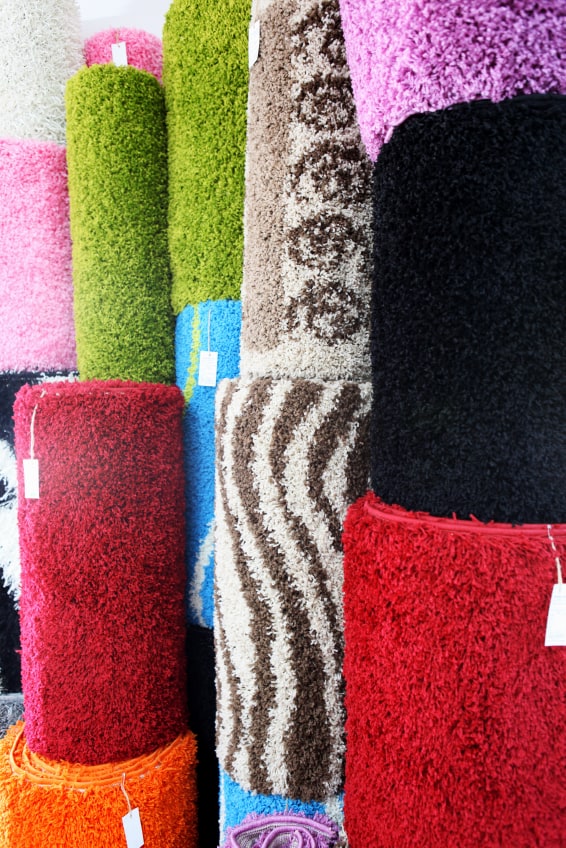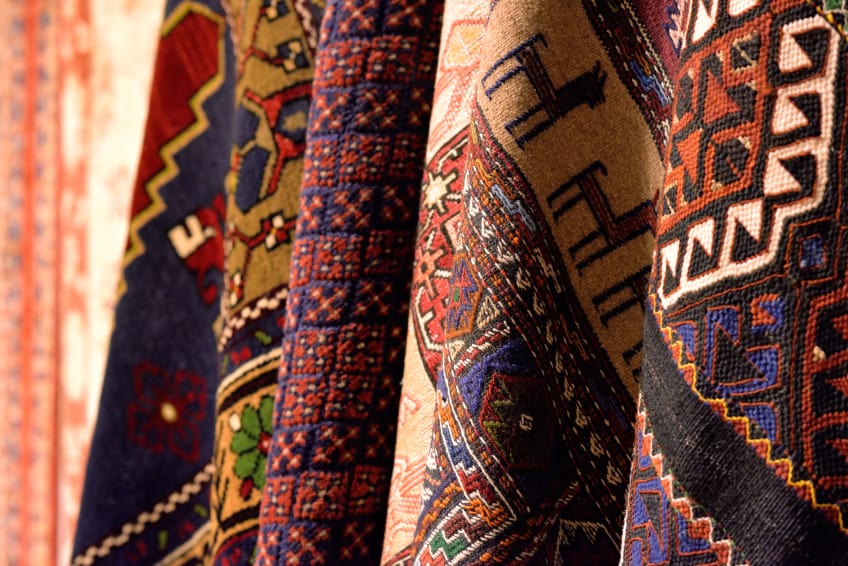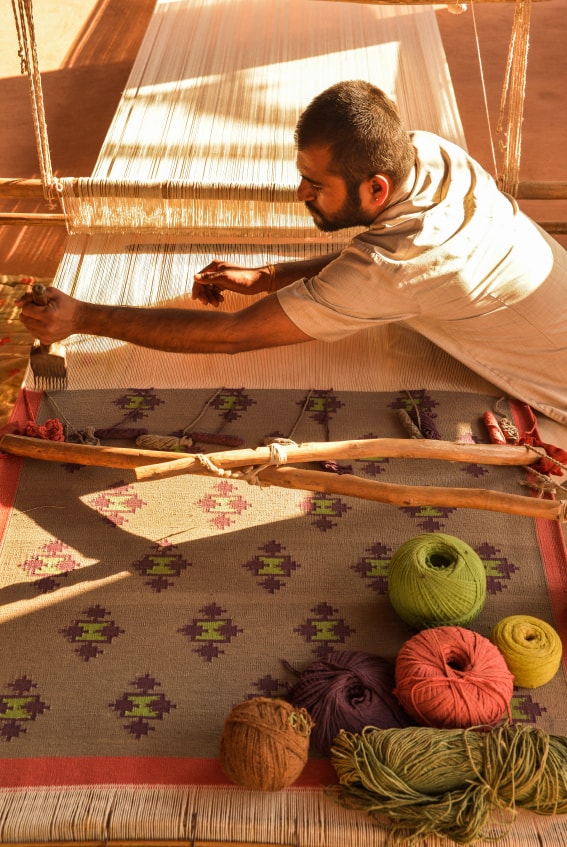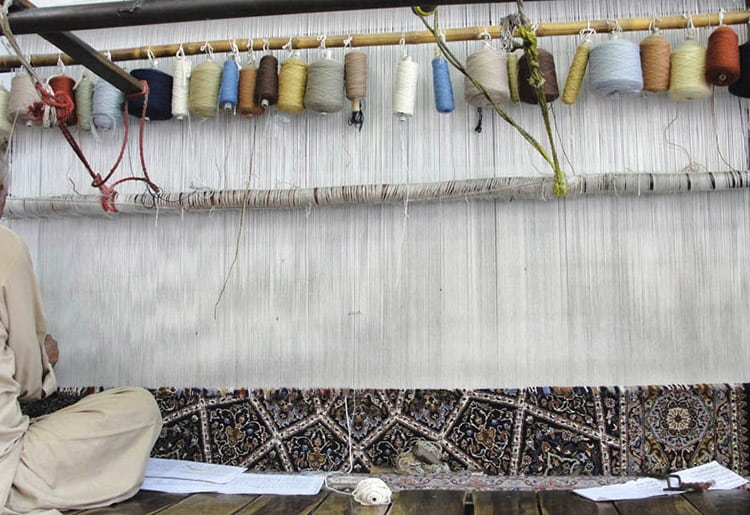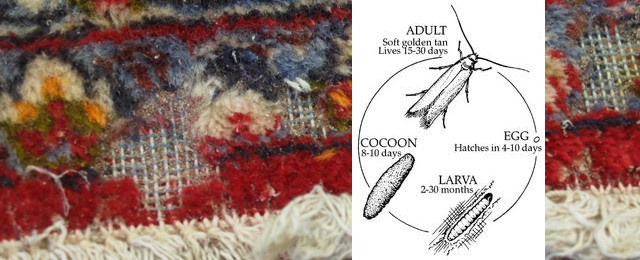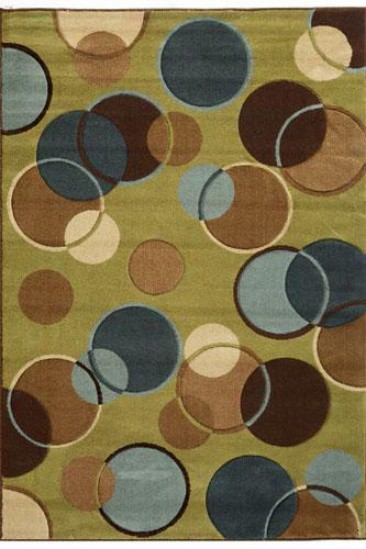Many people wonder about the difference between synthetic and hand woven cotton rugs. Truth be told, it’s night and day and you are about to find out why. It should be noted, though, that at the end of the day, it’s clearly a matter of personal taste and what material suits you and your lifestyle best!
Happy reading!
What do I need to know about a synthetic rug?
Synthetic rugs are made with polypropylene/nylon/polyester/acrylic fibers, which are all man-made and come from petroleum. Petroleum derivatives then go through a treatment with harsh chemicals to become stain resistant and then is finally woven into rugs. Now, if you want to be able to tell the difference between the various synthetic materials, you’ll be challenged. And, since they are machine-made, they are weaved in a few hours.
They can last up to 5 years with professional cleaning and aren’t resilient to foot traffic to the point wool rugs are. Also, you won’t find wool’s wonderful spiral structure that nature has created so at synthetic rugs, whose fibers will quickly tear if you place them in a high foot traffic area or under heavy furniture. It will also look dull and yellowed if exposed to direct sunlight (sun bleaching). Although synthetic, nylon in particular, makes the least expensive rugs, it is also the first to show significant wear and tear, too. This means that it will quickly show its age.
However, nylon, of all synthetic fibers, tends to be the strongest and most durable (hence more expensive than the other three), although not even close to wool.
What do I need to know about a wool rug?
Wool rugs are had woven rugs made from natural wool. They usually come with intricate designs and patterns, thanks to their knots that count hundreds. It is said to be a noise insulator, which is why they are much-preferred from families with lots of outside traffic noise.
Finally, it usually takes 3-4 months for an artisan to weave a wool rug and can last for, at least, 50 years (wool is one of the most durable fibers in nature), making wool rugs an heirloom piece for many generations. Hence, if you have a wool rug at home, you are making a great investment, even if you are considering re-sale (antique wool rugs are sold at very high prices).
Also, wool can withstand heavy foot traffic and won’t be matted down over the years because of its spiral shape and naturally crimped texture. They only patina with age, which gives them a luxurious look and feel.
How do I clean wool?
Wool rugs are very easy to clean and they don’t require complex cleaning methods, despite the rumors. This is because they have pockets that camouflage pet hair and dust. To keep them in mint condition, vacuum them every 1-3 weeks and have them professionally cleaned every 1-3 years, depending on the foot traffic they have received. However, you can expect them to look fresh like you’ve just bought them thanks to their structure and design.
When it comes to removing stains, a cloth dampened with a solution of water and white vinegar is enough to allow you to get rid of the nasty stain. Just make sure you address the stain within the first 15-2 minutes of the accident so that you don’t give enough time for the stain to set in.
Wool is water repellent. Therefore, any accidents with water-based stains will easily be cleaned, which is why wool rugs are ideal for dining rooms and kitchens.
(Check out our cleaning hacks to make your life easier and tips to clean a rug fringe posts!)
How do I clean synthetic?
It is also very simple and easy to clean a synthetic rug. Again, any water-based stains won’t set in (they sit on top) so you can just wipe them away with a slightly damp cloth. The same applies to dirt that also sits on top, though, because synthetic rugs don’t have pockets to hide it. So, you will need to vacuum a synthetic rug every day to keep it looking clean. Now, for oil-based stains, things are not too good because the oil goes down the base of the rug and need professional cleaning at least every year.
That said, synthetic rugs don’t hold odor since they are not porous.
How about design quality?
In wool rugs, the bottom is the mirror of the top design. This means that the image of the decorative top pile is exactly the same at the bottom. In synthetic rugs, the bottom is plastic and is glued. Also, the design in synthetic rugs is usually less detailed and slightly off center.
Know that the back of a wool rug is soft and won’t cause any damage to carpeted or hardwood flooring. This is not the case with synthetic rugs, whose hard plastic backing can scratch your hardwood floors.
What about their feel?
The hundreds of knots tied to create the patterns and design make wool rugs that are hand-woven are soft, silky and luxurious to the touch. Their pile is sturdy, and the rug can maintain its shape for many decades thanks to its natural spiral construction.
Synthetic rugs will also feel soft to the touch, but this will last for only a few weeks or maybe months. Soon, they will feel tough and plastic.
Note: If you run your fingers through the pile of the rug and they run easily, it’s not something to be happy about because you probably are testing a rug with low knot content.
Other properties
Wool is flame retardant, which means that they keep a fire from spreading. No wonder it has been used in airplanes and firefighters’ gear. We cannot say the say, though, for synthetic rugs that tend to melt and burn, also causing damage to flooring. Therefore, you shouldn’t place one around appliances and fixtures that tend to overheat (i.e. lamps) or smoking areas.
Do you like Bokhara rugs or want to buy a Persian or Oriental rug but don’t know how to tell between the real thing and the fake, feel free to browse!

